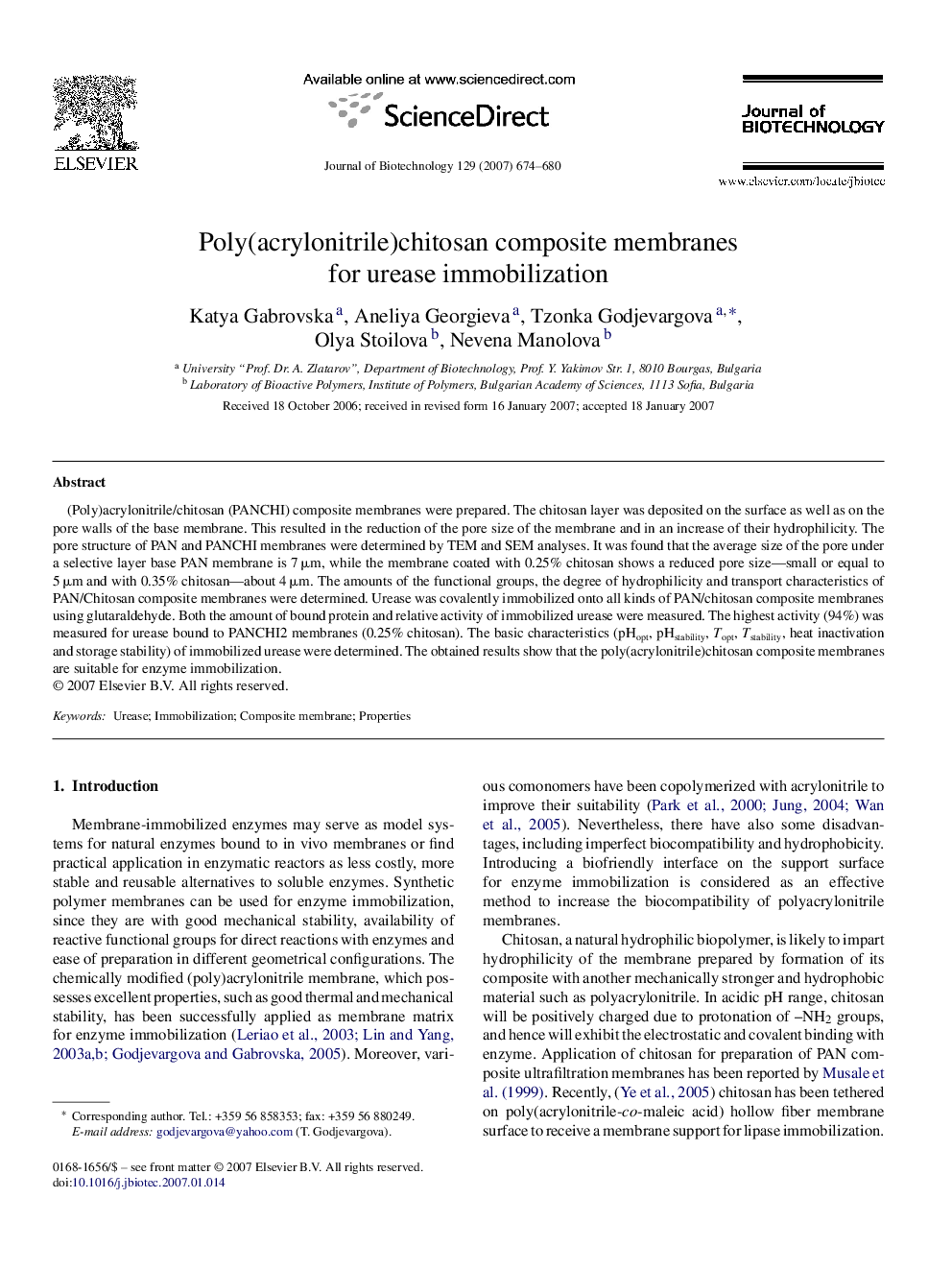| Article ID | Journal | Published Year | Pages | File Type |
|---|---|---|---|---|
| 25367 | Journal of Biotechnology | 2007 | 7 Pages |
(Poly)acrylonitrile/chitosan (PANCHI) composite membranes were prepared. The chitosan layer was deposited on the surface as well as on the pore walls of the base membrane. This resulted in the reduction of the pore size of the membrane and in an increase of their hydrophilicity. The pore structure of PAN and PANCHI membranes were determined by TEM and SEM analyses. It was found that the average size of the pore under a selective layer base PAN membrane is 7 μm, while the membrane coated with 0.25% chitosan shows a reduced pore size—small or equal to 5 μm and with 0.35% chitosan—about 4 μm. The amounts of the functional groups, the degree of hydrophilicity and transport characteristics of PAN/Chitosan composite membranes were determined. Urease was covalently immobilized onto all kinds of PAN/chitosan composite membranes using glutaraldehyde. Both the amount of bound protein and relative activity of immobilized urease were measured. The highest activity (94%) was measured for urease bound to PANCHI2 membranes (0.25% chitosan). The basic characteristics (pHopt, pHstability, Topt, Tstability, heat inactivation and storage stability) of immobilized urease were determined. The obtained results show that the poly(acrylonitrile)chitosan composite membranes are suitable for enzyme immobilization.
